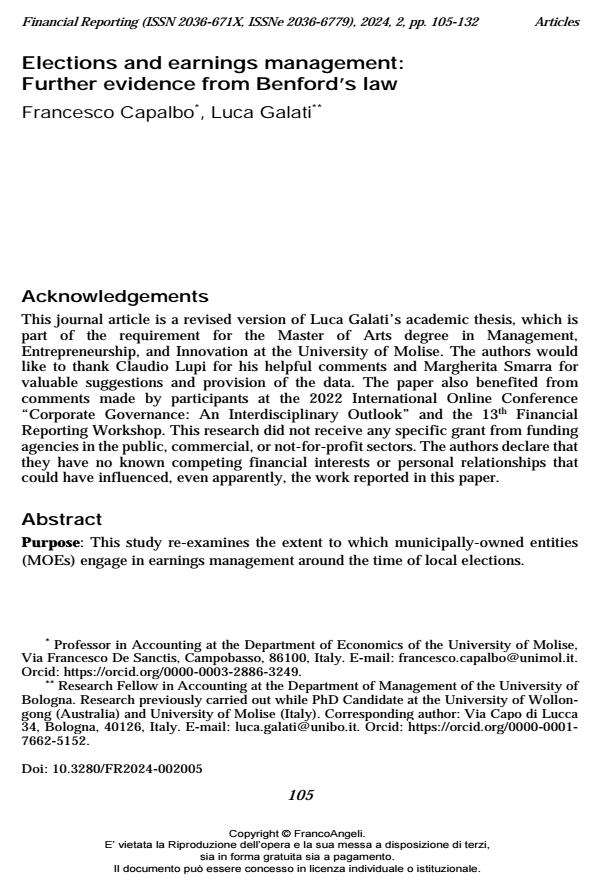Elections and earnings management: Further evidence from Benford’s law
Titolo Rivista FINANCIAL REPORTING
Autori/Curatori Francesco Capalbo, Luca Galati
Anno di pubblicazione 2024 Fascicolo 2024/2
Lingua Inglese Numero pagine 28 P. 105-132 Dimensione file 252 KB
DOI 10.3280/FR2024-002005
Il DOI è il codice a barre della proprietà intellettuale: per saperne di più
clicca qui
Qui sotto puoi vedere in anteprima la prima pagina di questo articolo.
Se questo articolo ti interessa, lo puoi acquistare (e scaricare in formato pdf) seguendo le facili indicazioni per acquistare il download credit. Acquista Download Credits per scaricare questo Articolo in formato PDF

FrancoAngeli è membro della Publishers International Linking Association, Inc (PILA)associazione indipendente e non profit per facilitare (attraverso i servizi tecnologici implementati da CrossRef.org) l’accesso degli studiosi ai contenuti digitali nelle pubblicazioni professionali e scientifiche
This study re-examines the extent to which municipally-owned entities (MOEs) en-gage in earnings management around the time of local elections. Design/methodology/approach: The study analyses the total revenue figures for 506 unlisted Italian MOEs from 2009 to 2014 using Benford’s law to detect signs of low data quality or manipulated numbers in financial statements. Findings: The findings reveal that entities owned by local governments engage in earnings management practices during pre-electoral seasons, which is consistent with the political cost hypothesis. Accounting numbers are rounded to the closest key cognitive reference point by overusing and underusing specific revenue digits. This aligns with the performance expectations hypothesis as well. Originality/value: This study adds evidence to the existing issue of earnings management in the public sector during elections by using a less conventional ap-proach, highlighting the need for increased transparency in financial reporting be-fore these critical periods. Practical implications: Auditors, forensic accountants, and judicial bodies that endeavour to protect public finances can also employ Benford’s law to scrutinise the financial statements of hybrid entities at such times.
Parole chiave:Benford’s law, cosmetic earnings management, forensic accounting, local elections, municipally-owned entities, public sector accounting
Jel codes:C12, D72, M41
Francesco Capalbo, Luca Galati, Elections and earnings management: Further evidence from Benford’s law in "FINANCIAL REPORTING" 2/2024, pp 105-132, DOI: 10.3280/FR2024-002005